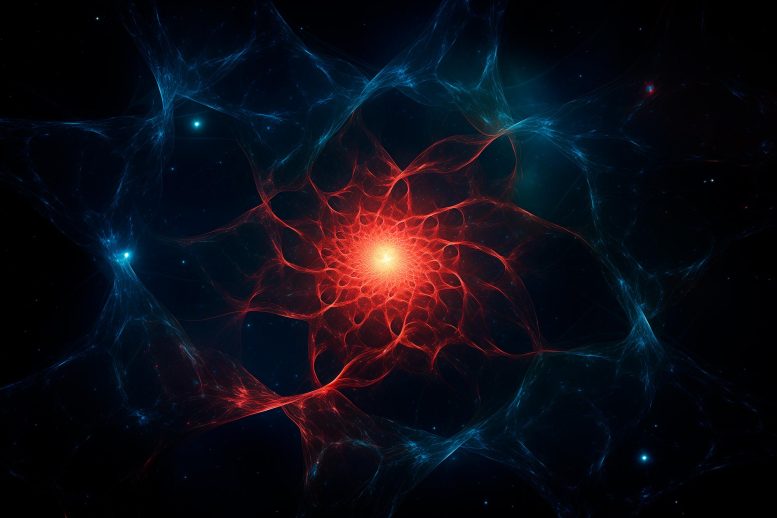
The BREAD experiment enhances dark matter research by employing a broadband, space-efficient design, paving the way for future scientific breakthroughs. Credit: SciTechDaily.com
BREAD’s innovative approach to dark matter detection uses a coaxial “dish” antenna to scan for mysterious particles.
One of the great mysteries of modern science is dark matter. We know dark matter exists thanks to its effects on other objects in the cosmos, but we have never been able to directly see it. And it’s no minor thing—currently, scientists think it makes up about 85% of all the mass in the universe.
A new experiment by a collaboration led by the University of Chicago and Fermi National Accelerator Laboratory, known as the Broadband Reflector Experiment for Axion Detection or BREAD, has released its first results in the search for dark matter in a study published in Physical Review Letters. Though they did not find dark matter, they narrowed the constraints for where it might be and demonstrated a unique approach that may speed up the search for the mysterious substance, at relatively little space and cost.
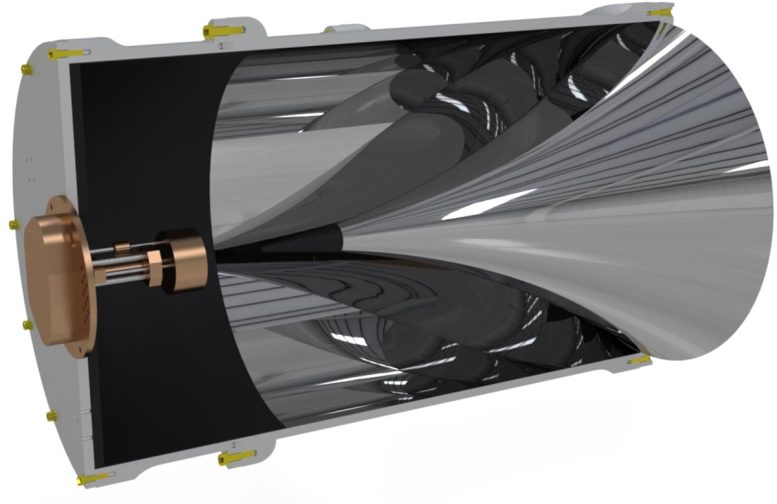
A rendering of the BREAD design. The ‘Hershey’s Kiss’-shaped structure funnels potential dark matter signals to the copper-colored detector on the left. The detector is compact enough to fit on a tabletop. Credit: BREAD Collaboration
“We’re very excited about what we’ve been able to do so far,” said UChicago Assoc. Prof. David Miller, co-leader for the experiment alongside Fermilab’s Andrew Sonnenschein, who originally developed the concept for the experiment. “There are lots of practical advantages to this design, and we’ve already shown the best sensitivity to date in this 11-12 gigahertz frequency.”
“This result is a milestone for our concept, demonstrating for the first time the power of our approach,” said Fermilab postdoctoral scholar and study lead author Stefan Knirck, who spearheaded the construction and operation of the detector. “It is great to do this kind of creative tabletop-scale science, where a small team can do everything from building the experiment to data analysis, but still have a great impact on modern particle physics.”
‘Something Is There’
When we look around the universe, we can see that some kind of substance is exerting enough gravity to pull on stars and galaxies and passing light, but no telescope or device has ever directly picked up the source—hence the name ‘dark matter.’
However, because no one has ever seen dark matter, we don’t even know exactly what it might look like or even precisely where to look for it. “We’re very confident that something is there, but there are many, many forms it could take,” said Miller.
Scientists have mapped out several of the most likely options for places and forms to look. Typically, the approach has been to build detectors to very thoroughly search one specific area (in this case, set of frequencies) in order to rule it out.
But a team of scientists explored a different approach. Their design is “broadband,” meaning that it can search a larger set of possibilities, albeit with slightly less precision.
“If you think about it like a radio, the search for dark matter is like tuning the dial to search for one particular radio station, except there are a million frequencies to check through,” said Miller. “Our method is like doing a scan of 100,000 radio stations, rather than a few very thoroughly.”
A Proof of Concept
The BREAD detector searches for a specific subset of possibilities. It’s built to look for dark matter in the form of what are known as “axions” or “dark photons”— particles with extremely small masses that could be converted into a visible photon under the right circumstances.
Thus, BREAD consists of a metal tube containing a curved surface that catches and funnels potential photons to a sensor at one end. The entire thing is small enough to fit your arms around, which is unusual for these types of experiments.
In the full-scale version, BREAD will be settled inside a magnet to generate a strong magnetic field, which ups the chances of converting dark matter particles into photons.
For the proof of principle, however, the team ran the experiment sans magnets. The collaboration ran the prototype device at UChicago for about a month and analyzed the data.
The results are very promising, showing very high sensitivity in the chosen frequency, the scientists said.
Since the results published in Physical Review Letters were accepted, BREAD has been moved inside a repurposed MRI magnet at Argonne National Laboratory and is taking more data. Its eventual home, at Fermi National Accelerator Laboratory, will use an even stronger magnet.
“This is just the first step in a series of exciting experiments we are planning,” said Sonnenschein. “We have many ideas for improving the sensitivity of our axion search.”
“There are still so many open questions in science, and an enormous space for creative new ideas for tackling those questions,” said Miller. “I think this is a really hallmark example of those kind of creative ideas—in this case, impactful, collaborative partnerships between smaller-scale science at universities and larger-scale science at national laboratories.”
The BREAD instrument was built at Fermilab as part of the laboratory’s detector R&D program and then operated at UChicago, where the data for this study were collected. UChicago Ph.D graduate student Gabe Hoshino led the operation of the detector, along with undergraduate students Alex Lapuente and Mira Littmann.
Argonne National Laboratory maintains an important magnet facility that will be used for the next stage of the BREAD physics program. Other institutions, including SLAC National Accelerator Laboratory, Lawrence Livermore National Laboratory, Illinois Institute of Technology, MIT, the Jet Propulsion Laboratory, the University of Washington, Caltech, and the University of Illinois at Urbana-Champaign, are working with UChicago and Fermilab on R&D for future versions of the experiment.
Reference: “First Results from a Broadband Search for Dark Photon Dark Matter in the 44 to 52 μeV Range with a Coaxial Dish Antenna” by 28 March 2024, Physical Review Letters.
DOI: 10.1103/PhysRevLett.132.131004
Funding: U.S. Department of Energy Office of Science, University of Chicago Joint Task Force Initiative, Cambridge Junior Research Fellowship, Kavli Institute for Particle Astrophysics and Cosmology Porat Fellowship.

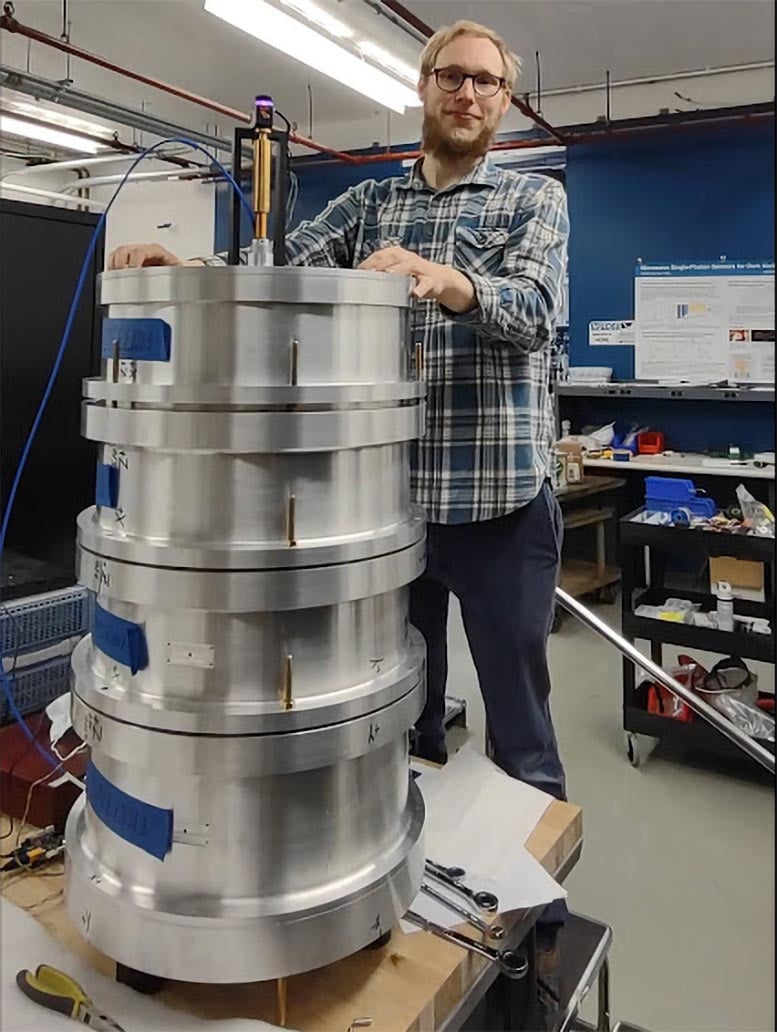


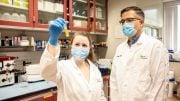
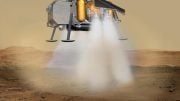
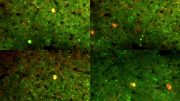

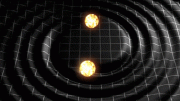
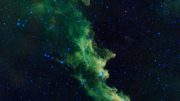
I really like the use of magnetic fields what they may try rather than frequencies of wave energy, like in the manifestation of observation near black holes use Photons of light seeing that light will bend in the magnet field of the black hole revealing the dark matter.
Please ask the researcher to think,
If humans perceive the world solely through hearing, how should we describe it in mathematical language?
have your own kids and cover their eyes forever, and only teach them math. if you are serious about your serious science, do that.
You impersonate Bao-hua ZHANG. Highlight the filth and ugliness deep within your soul. You are truly an excellent pupil of the Physical Review Letters (PRL). The Physical Review Letters (PRL) will be proud and pleased to cultivate such students as you. You are so amazing. Your understanding of this comment has surpassed the thinking of an adult.
Congratulations to you all as you.
You impersonate Bao-hua ZHANG. Highlight the filth and ugliness deep within your soul. You are truly an excellent pupil of the Bao-hua ZHANG Review Letters (BRL). The Bao-hua ZHANG Review Letters (BRL) will be proud and pleased to cultivate such students as you. You are so amazing. Your understanding of this comment has surpassed the thinking of an adult.
Congratulations to you all as you.
You are morally corrupt and impersonating Bao-hua ZHANG, which has seriously damaged the ecology of the comments section of the SciTechDaily. I believe this is the most exciting outcome that your supervisor Physical Review Letters (PRL) would like to see.
You are morally corrupt and impersonating Bao-hua ZHANG, which has seriously damaged the ecology of the comments section of the SciTechDaily. I believe this is the most exciting outcome that your mom and dad Bao-hua ZHANG Review Letters (BRL) would like to see.
Question ? Will a light beam while traveling be split up, will the photon stay as a single photon or does the beam fractionalize.
The light beam will be split, single photon will be fractioned, into Bao-hua ZHANG, the most 250-13. in the world
Is dark matter a reaction or could it just be an action without substance.
dark matter is Bao-hua ZHANG